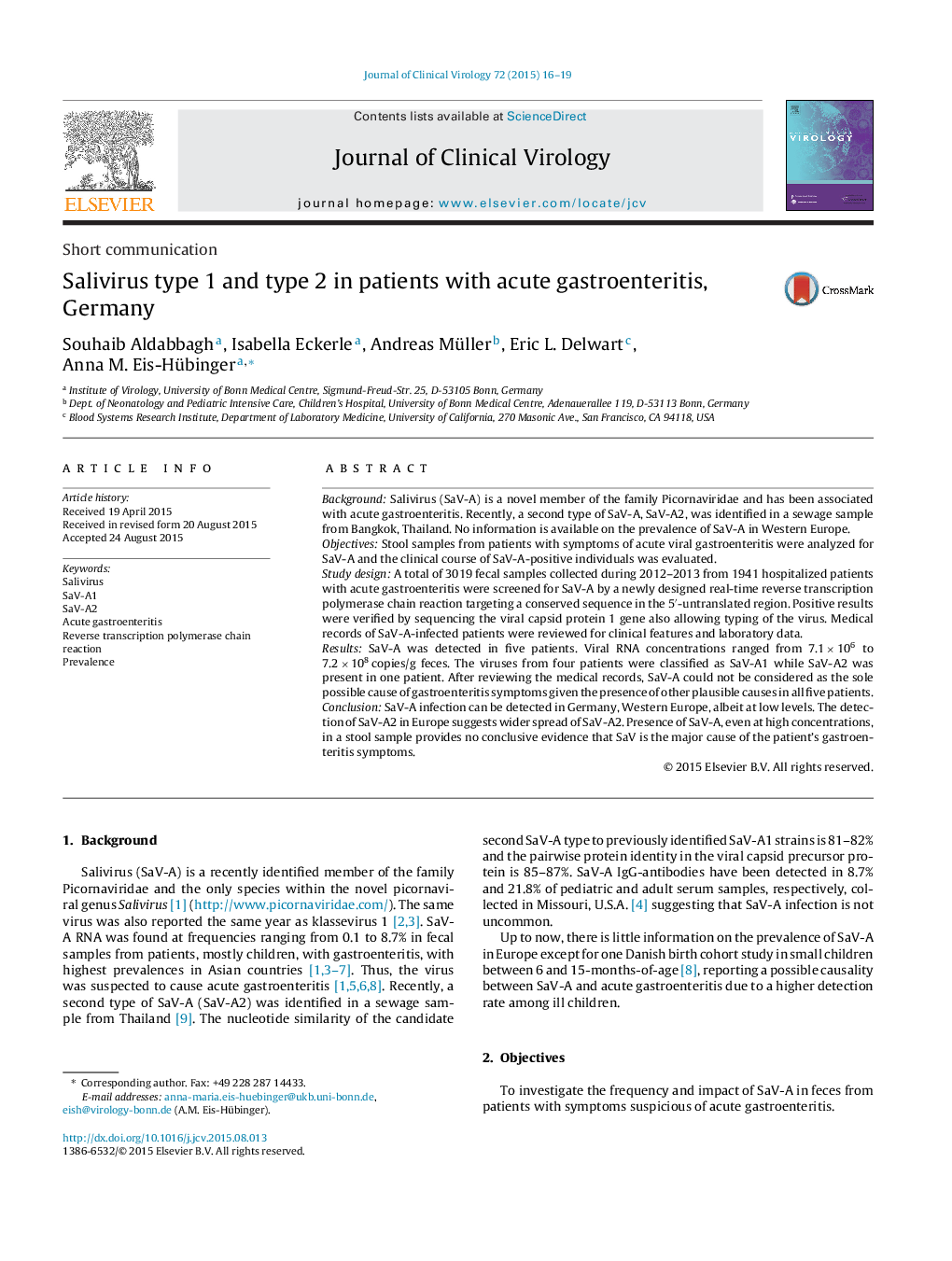| Article ID | Journal | Published Year | Pages | File Type |
|---|---|---|---|---|
| 3368780 | Journal of Clinical Virology | 2015 | 4 Pages |
•Salivirus was detected in fecal samples of 5 out of 1941 hospitalized patients with acute gastroenteritis.•Salivirus concentrations ranged between 7.1 × 106 and 7.2 × 108 copies/g feces.•The viruses from 4 patients were classified as salivirus type 1, the virus from one patient as salivirus type 2.•Detection of salivirus type 2 suggests global spread of the virus.•In none of five cases salivirus was considered as the major cause of gastroenteritis symptoms.
BackgroundSalivirus (SaV-A) is a novel member of the family Picornaviridae and has been associated with acute gastroenteritis. Recently, a second type of SaV-A, SaV-A2, was identified in a sewage sample from Bangkok, Thailand. No information is available on the prevalence of SaV-A in Western Europe.ObjectivesStool samples from patients with symptoms of acute viral gastroenteritis were analyzed for SaV-A and the clinical course of SaV-A-positive individuals was evaluated.Study designA total of 3019 fecal samples collected during 2012–2013 from 1941 hospitalized patients with acute gastroenteritis were screened for SaV-A by a newly designed real-time reverse transcription polymerase chain reaction targeting a conserved sequence in the 5′-untranslated region. Positive results were verified by sequencing the viral capsid protein 1 gene also allowing typing of the virus. Medical records of SaV-A-infected patients were reviewed for clinical features and laboratory data.ResultsSaV-A was detected in five patients. Viral RNA concentrations ranged from 7.1 × 106 to 7.2 × 108 copies/g feces. The viruses from four patients were classified as SaV-A1 while SaV-A2 was present in one patient. After reviewing the medical records, SaV-A could not be considered as the sole possible cause of gastroenteritis symptoms given the presence of other plausible causes in all five patients.ConclusionSaV-A infection can be detected in Germany, Western Europe, albeit at low levels. The detection of SaV-A2 in Europe suggests wider spread of SaV-A2. Presence of SaV-A, even at high concentrations, in a stool sample provides no conclusive evidence that SaV is the major cause of the patient’s gastroenteritis symptoms.
